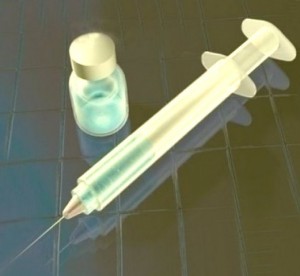Though the swine flu pandemic (H1N1) is over, the H1N1 virus still does exist, leading to on and off strain of seasonal influenza. It is better to have swine flu vaccine to be immune to the H1N1 virus.
The flu vaccine is generally given between September and November, which is normally before the late-fall to early-winter commence of flu season. It takes up to two weeks to build immunity after flu injection. The swine flu vaccine is no different from the flu vaccine that is formulated every year to protect against influenza virus. So, it if you take the seasonal flu shot, it can protect you against H1N1 virus, the stain of influenza A(HEN2) and influenza B virus.
Flu viruses mutate fast, which means they can render a particular season’s vaccine useless by the next season. This is why people need vaccination on a yearly basis. Health authorities take information from various parts of the world to find out which influenza virus strain is likely to be more prevalent during the next flu season. This pointer is used by manufactures when they manufacture vaccines for swine flu virus.
In the United States, the flu vaccine is advised for people beginning from the age group of six months. Since the most vulnerable group or risk factors for swine flu are young childen, pregnant women and senior citizens, these groups need to be immunized with swine flu virus, as they call for the highest incidence of complications.
Swine Flu Vaccine Types
Swine flu’s vaccine is quite effective during the first six months after receiving the flu shot. After that the protection strength begins to wane. The swine flu vaccine administered is in two forms:
1. Swine flu shot:
The flu shot has an inactive vaccine made from dead virus. The injection is given as a shot in the arm. As the viruses in the vaccine are rendered inactive or killed, the shot won’t cause flu but it can help develop antibodies that can resist flu viruses.
2. Swine flu Nasal spray:
Nasal spray for flu is administerd through the nose. The vaccine called FluMist has live but weakened viruses. So this vaccine without causing flu, prompts an immune response in the airways and nose.
For the vulnerable group of older adults, there is a higher dose vaccine more than the standard swine flu vaccine, specially for people in age group of 65 and older because they do not have a strong antibody response.
Children who are below nine years of age need two flu vaccine doses, after four weeks, if they are being vaccinated for the first time for flu. This is because children do not have enough levels of antibodies when they are vaccinated for the first time.
Swine Flu Vaccine Side Effects
Swine flu side effects are similar to that of the ordinary flu vaccine. These symptoms can last for about 2 to 3 days after taking the vaccine. Here are some of the swine flu side effects that is possible:
1. The swine flu side effects in children can manifest in the form of symptoms like mild headache, fever na d child
2. Thre can be pain in the muscles, followed by weakness generally and fatigue that can last for a week.
3. The topical side effects include soreness, itching and swelling of the area. The place can also inflame, become red and thick.
4. Swine flu vaccine side effects for pregnant women can include nausea, followed by vomiting. The pregnant women and breast-feeding mothers should check with a healthcare provider before taking vaccination.
5. In severe cases, swine flu side effects can be in the form Guillain-Barre syndrome, an autoimmune disease that affects the peripheral nervous system.
Prevent swine flu vaccine side effects
In order to prevent side effects due to swine flu vaccine, individuals may consult the doctor and talk to them about oseltamivir phosphate, the key ingredient in the vaccine. Maintaining proper cleanness an also help avoid contracting flu.
